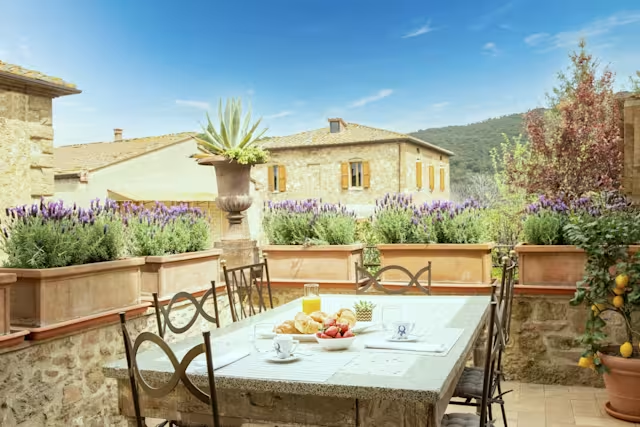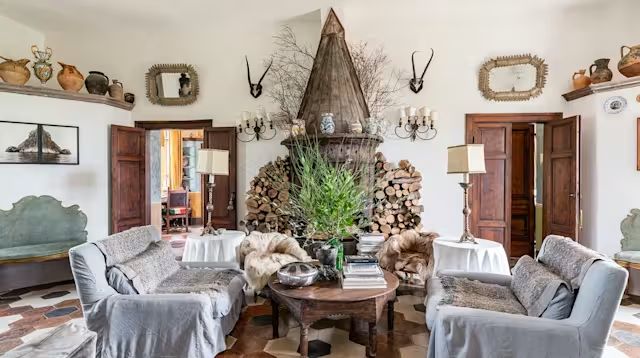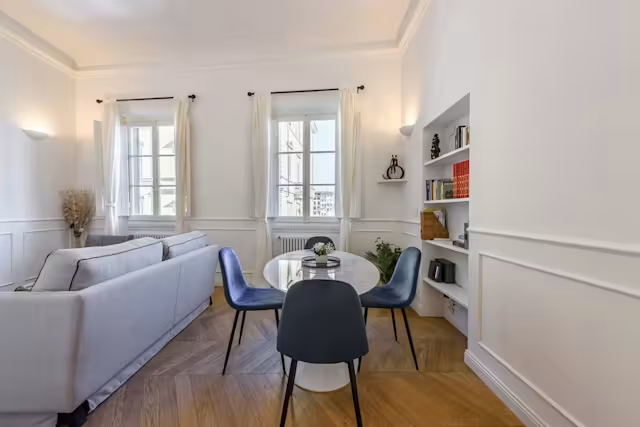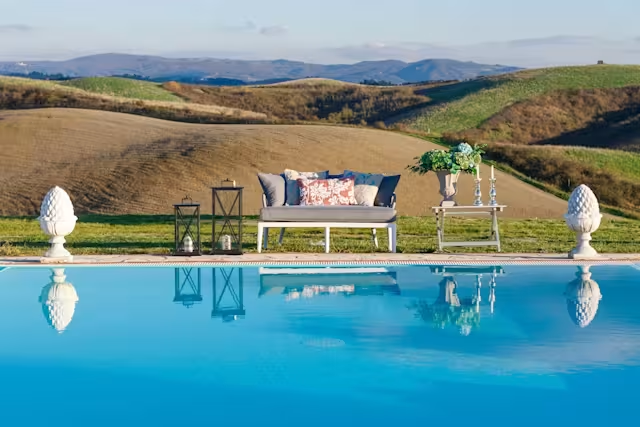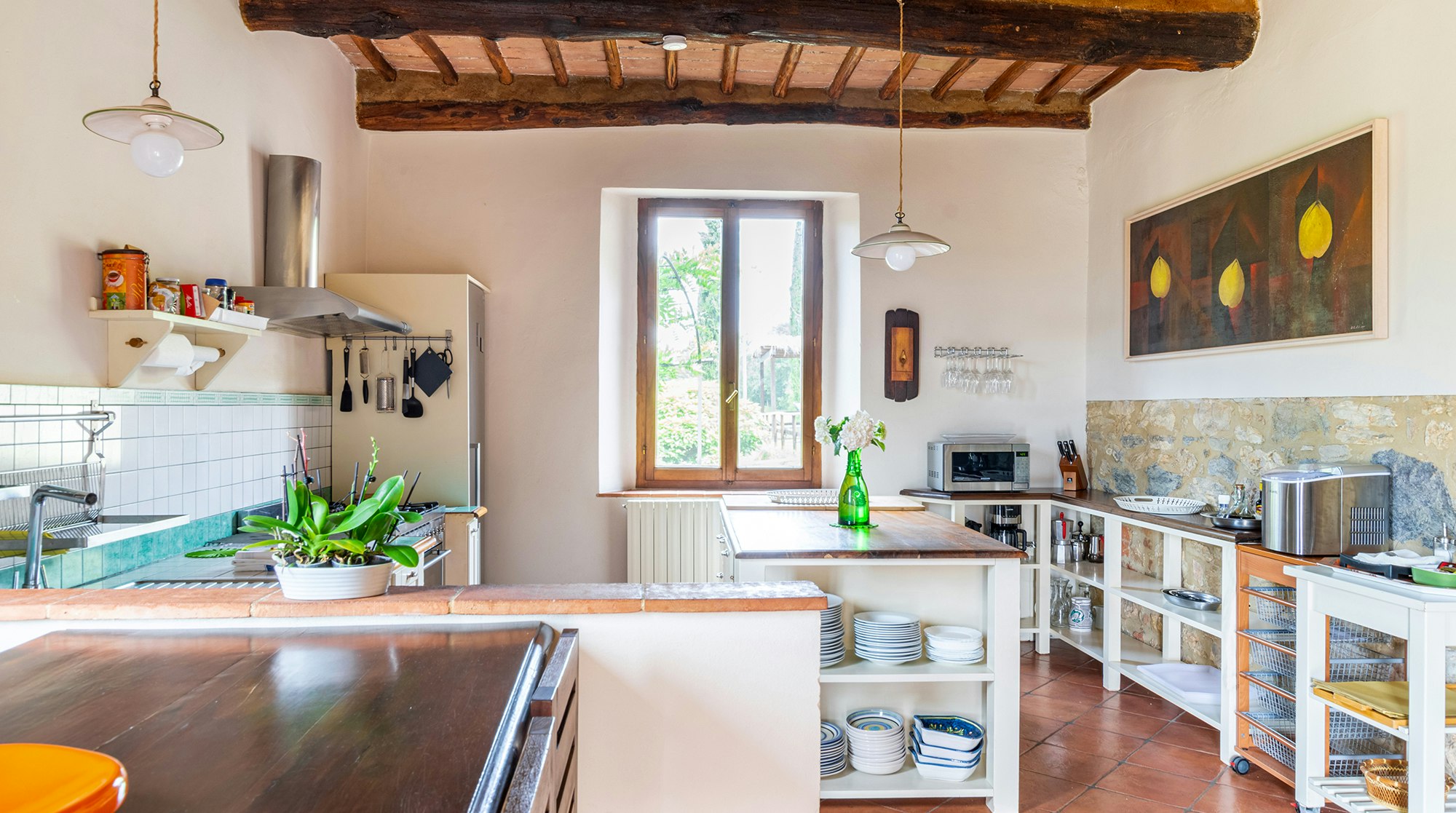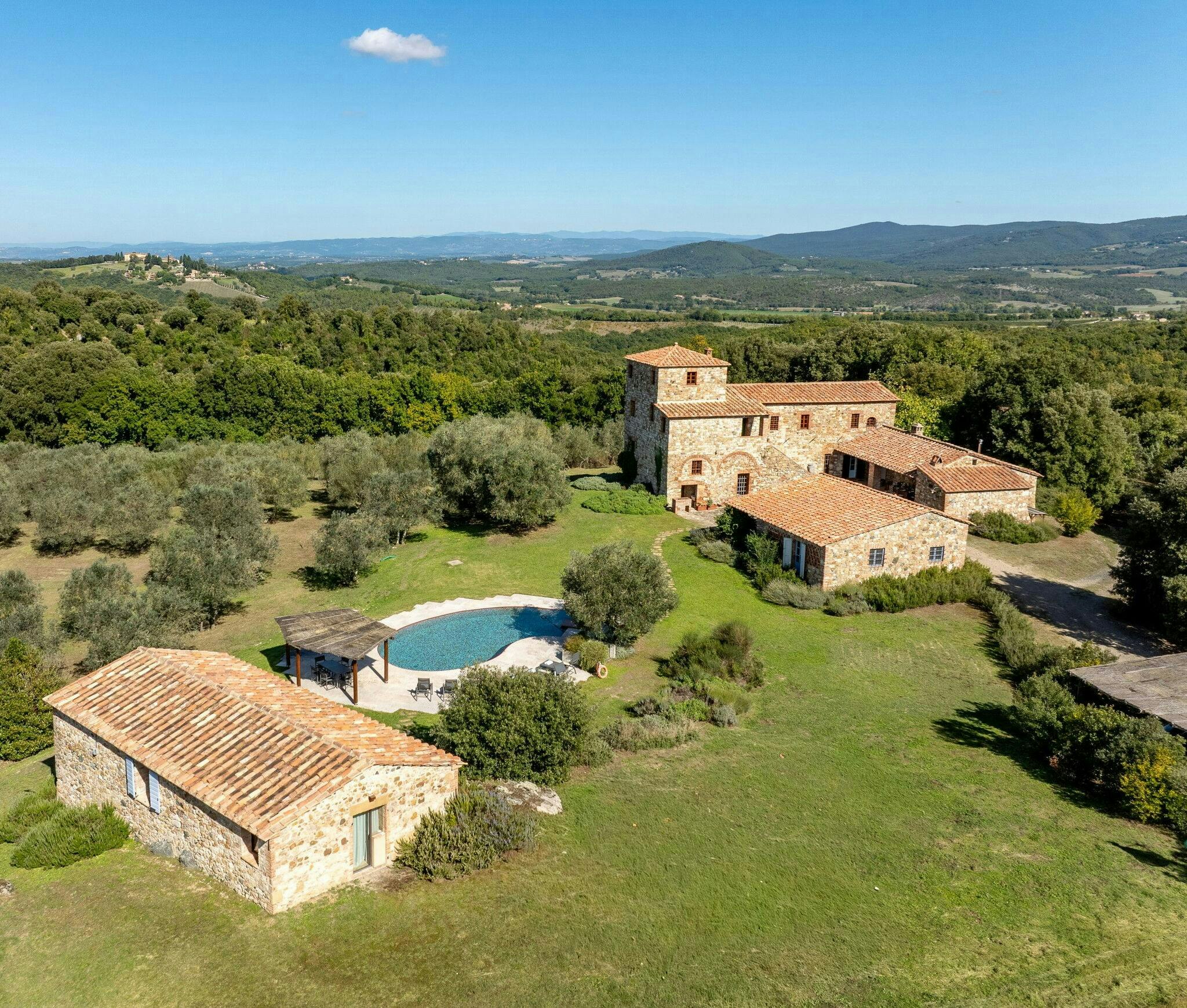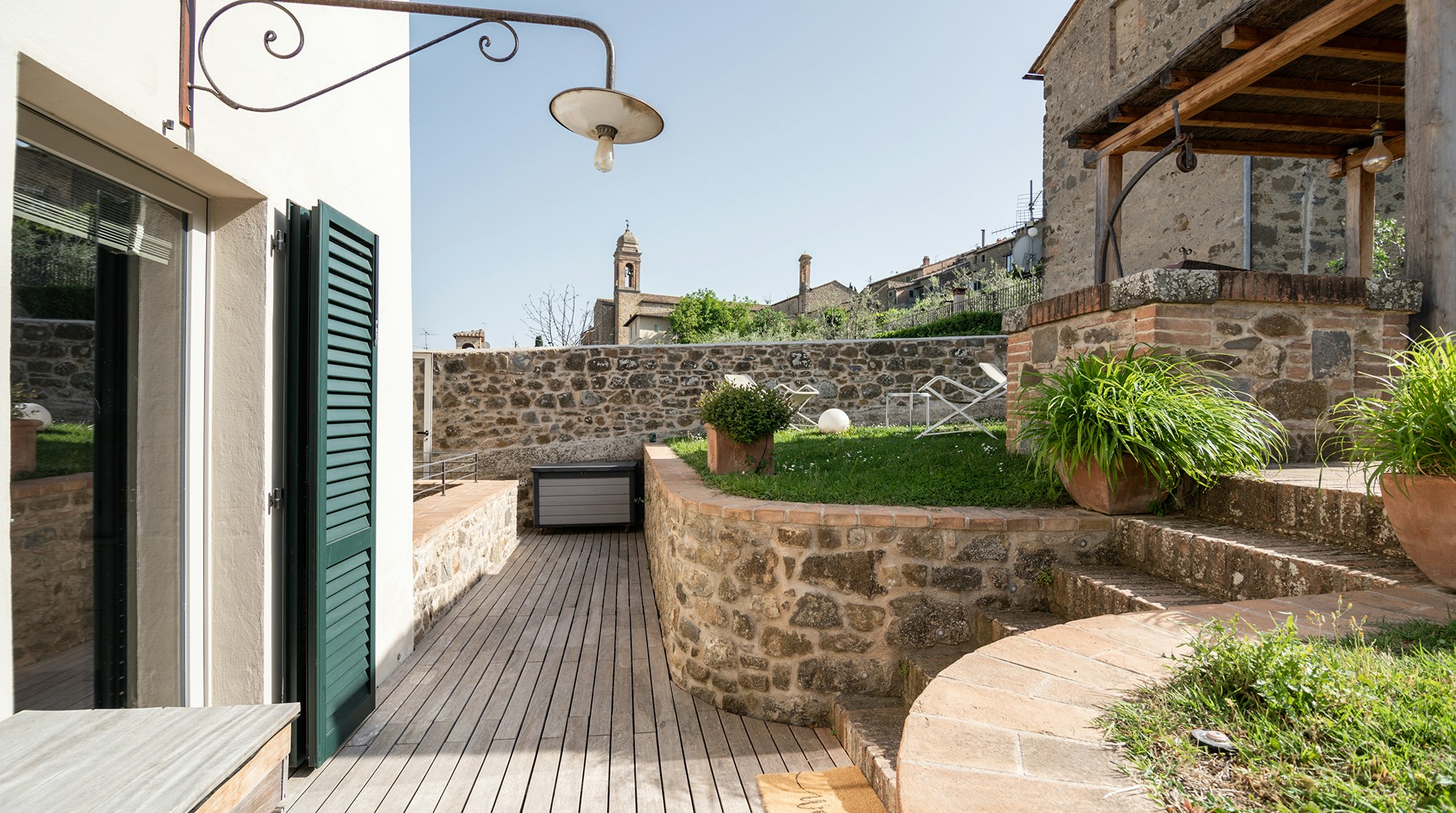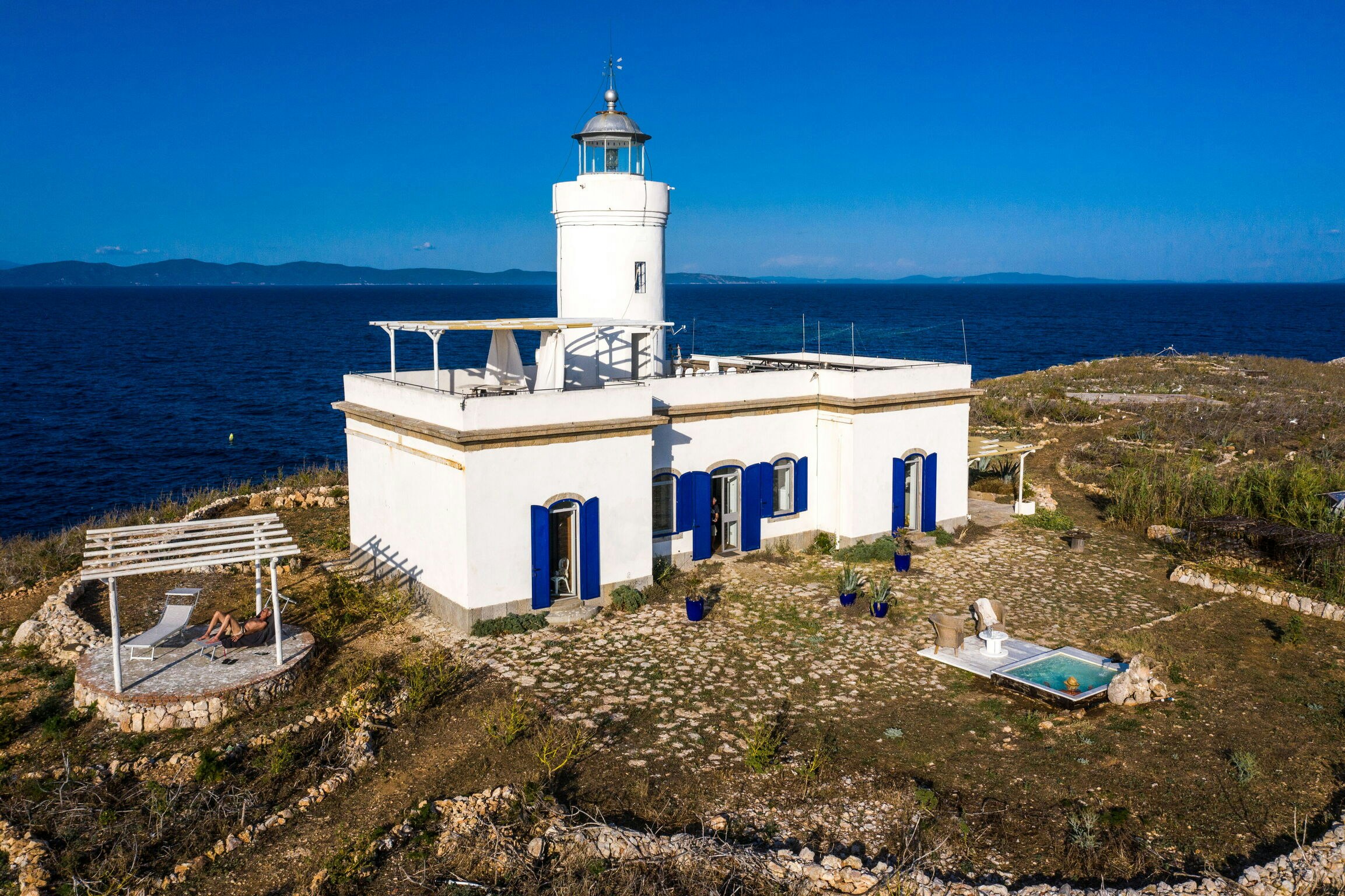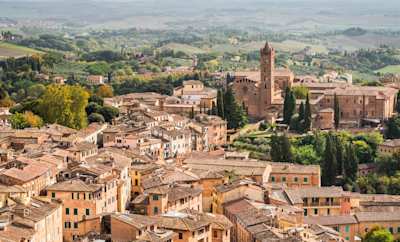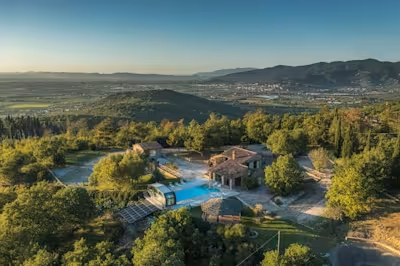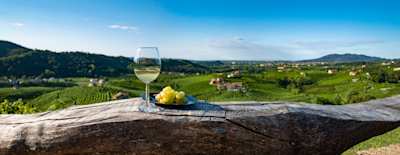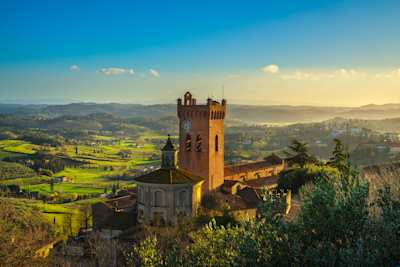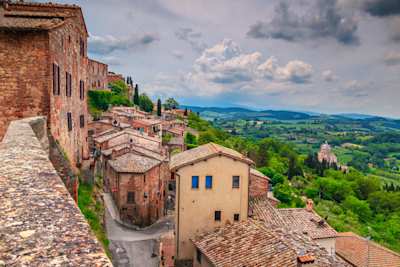5 Ways to Avoid the Overcrowded Areas in Tuscany
From visiting in the off-season to exploring underrated destinations, here are some ways to experience a quieter side of Tuscany
~

Tuscany is one of Italy's most visited regions. The area's renaissance cities and bucolic countryside draw in visitors from around the world looking to experience its unique attractions and idyllic nature. But the beauty of this region has its downside – it can get rather busy, and nothing takes away the magic of a place more than hordes of tourists. If you're wondering what areas to avoid in Tuscany and how to stay clear of the crowds, you'll be relieved to know that there are still plenty of ways you can still enjoy a quiet holiday. Our travel experts at Plum Guide have put together our top tips to escape the masses so that you can fully appreciate Tuscany's beauty at your own pace.
Time your holiday right
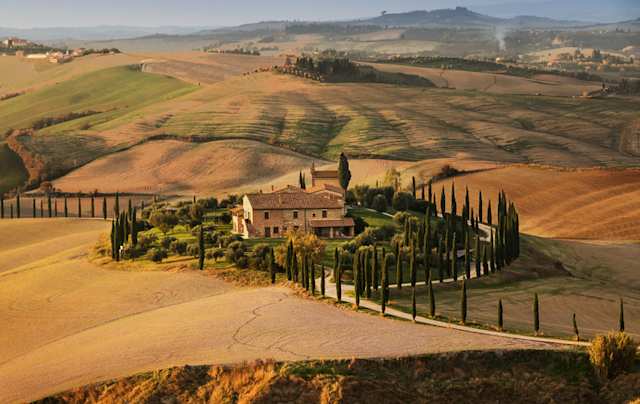
Autumn in Val d'Orcia, featuring a farmhouse surrounded by golden rolling fields, Tuscany, Italy
One of the most effective ways to avoid crowds is to visit during the shoulder season. For Tuscany, this is between spring (April and May) and early autumn (September and October). You’ll want to bypass the busy summer months of June, July and August. Not only can the heat be a little too much (29 to 33°C during the day), but you’ll also find it very overcrowded.
Spring is pleasant, and temperatures start to warm up into the 20°C range. It's when markets are overflowing with local produce like peaches and asparagus and wineries open their doors for tastings. Take a drive through the Val d’Orcia and admire the emerald green hills and fields of bright red poppies in full bloom. Spring is the best time to swim in the hot springs of Bagno Vignoni and Saturni, so be sure to take a detour here.
Between late September and October, the crowds start to thin and temperatures start to become more bearable, making sightseeing a much better experience. Tuscany is particularly beautiful in autumn when its rolling hills and vineyards turn into brilliant shades of gold and umber. Late autumn is also the olive harvest season, so visiting during this time is a fantastic opportunity to watch how olive oil is made, from picking the fruit to pressing them and tasting the olio nuovo, or ‘new oil’.
Timing is also important when it comes to sightseeing. To avoid the overcrowded areas in Tuscany, a simple Google search of whatever attraction you want to visit will tell you when the busiest and quietest times are – early mornings and late afternoons are usually when the crowds are smallest.
Explore hidden gems
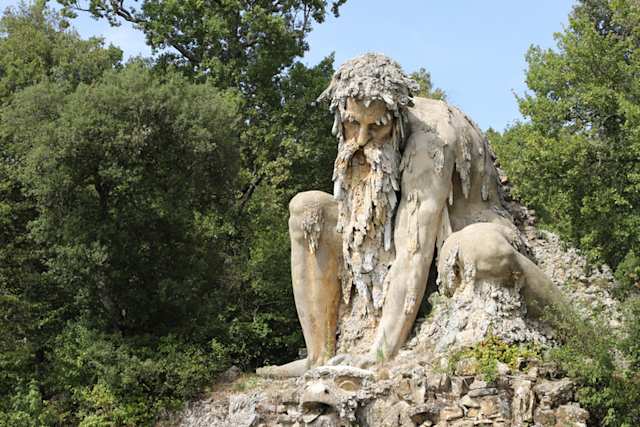
The Appennine Colossus in Villa Demidoff, near Florence, Tuscany, Italy
When visiting a city, you don't have to stick to the main sights. These are often packed with tourists and become areas you want to avoid in Tuscany. Instead, research lesser-known attractions that don't see as many visitors – you'll be pleasantly surprised at the places you'll stumble across.
Already been to Florence's Uffizi Gallery and Galleria dell'Accademia but still want to see some art? Head to the San Marco Museum, housed within a 15th-century Dominican monastery. Admire the well-preserved architecture, stunning frescoes, ancient manuscripts and intricate panel paintings. If the Boboli Gardens are too busy, escape the selfie sticks at Villa Demidoff. Just a short drive from Florence's city centre, this elegant villa is set within among gardens. It's worth a visit just to see the huge 16th-century statue of Colosso dell'Appennino.
In Pisa, you’ll come across plenty of museums which are just as interesting as the ones in Piazza dei Miracoli. For example, the Museum of San Matteo showcases 12th to 17th-century artwork, while the Palazzo Blu houses a range of exhibitions and cultural events.
Other Tuscan cities like Siena and Arezzo don’t see as many visitors as Florence and Pisa, and are good alternatives for city exploration. Even within them are plenty of secret spots. Just outside the historical centre of Siena is Basilica dell’Osservanza, a Renaissance church perched atop a hill. It’s the best place for panoramic views of Siena and the surrounding countryside, without tourists getting in the way of your shot. Just over an hour’s drive from Siena is Arezzo, once one of Tuscany’s wealthiest cities. It’s not too touristy, and makes for a fun day trip to stroll the medieval streets and shop for antiques.
Visit quieter towns elsewhere in Tuscany
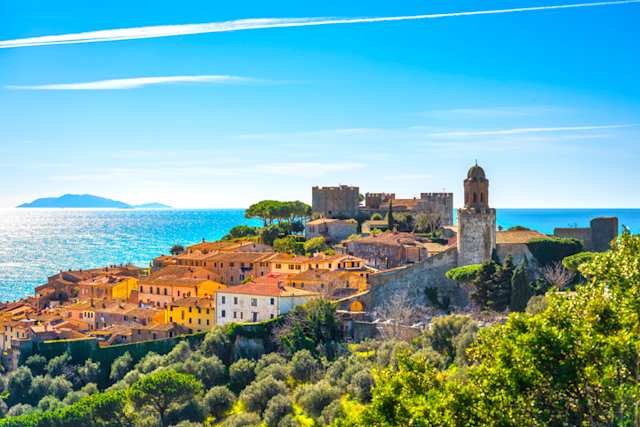
View of Castiglione della Pescaia, an old town by the sea, Tuscany, Italy
Just like seeking out hidden gems within a city, the same concept applies to seeing the rest of Tuscany. While no visit to the region is complete without visiting iconic cities like Florence and Pisa, we also recommend getting off the tourist trail and exploring Tuscany’s smaller and less-visited areas.
In the south of Tuscany is the delightful seaside town of Castiglione della Pescaia. A previous winner of Italy’s Most Beautiful Beach award, the coastline is tucked away among pinewood forests. Here, calm and sheltered waters provide optimum swimming conditions. The town itself is lively and cosmopolitan, with plenty of boutiques and restaurants.
Also in the south is Pitigliano, a historic town dubbed ‘Little Jerusalem’ for its 16th-century Jewish Quarter. Wander the maze of alleyways and visit the impressive Orsini Palace with its two museums. While you’re here, be sure to explore the underground caves and tunnels dating back to Etruscan times.
The north is equally beautiful – it's definitely not one of our areas to avoid in Tuscany. The Versilia Coast is a stunning stretch of beaches and seaside villages, which are mostly frequented by locals. One of the best-known towns is Forte dei Marmi, once a popular spot for well-heeled members of society. Meanwhile, Gargafana is a scenic area with lush green valleys, picturesque villages and plenty of opportunities for walking and cycling.
If you do stay in a city, stay outside the centre

Florence cityscape with Duomo Santa Maria Del Fiore, as seen from Piazzale Michelangelo in Oltrarno, Tuscany, Italy
Can't resist the pull of a historic metropolis? If you do choose to stay in touristy places like Florence and Pisa, it's still possible to avoid the crowds. A good tip when considering packed areas to avoid in Tuscany's cities is to stay on the outskirts or in more residential neighbourhoods.
For example, in Florence, you may want to stay clear of the Duomo neighbourhood. While you’ll appreciate the proximity to the city’s cultural landmarks, it can also be very overcrowded and full of tourists, no matter the time of year. Instead, opt for neighbourhoods on the edge of the city like Via Bolognese. It’s perfect if you’re looking to escape the hustle and bustle, yet still be connected to the city by public transport. Another good option is heading across the Arno River to the south bank. It's where you'll find less touristy neighbours like Arcetri and Oltrarno that still put you in a prime position for sightseeing.
Meanwhile, in Pisa, some of the busiest areas include Santa Maria – where you’ll find the city’s main attractions – and San Francesco, the top nightlife district. For peace and quiet, Sant’ Antonio is right by the river and offers plenty of green space for relaxing. San Martino is another good choice, offering a more authentic experience with plenty of cultural events going on.
But with such glorious nature nearby, it’s definitely worth considering staying somewhere rural for a more relaxed environment. Venture out into the Tuscan countryside and you’ll find more spacious accommodation options, including rustic farmhouses, villas with private swimming pools and acres of gardens to stroll around in. It also gives you the opportunity to stay near a vineyard if you’re looking to enjoy a tasting or two.
Get out into the Tuscan countryside

Woman riding an electric mountain bike between olive trees in the Chianti area with the medieval city of Montepulciano in the background, Tuscany, Italy
As mentioned above, one of the best ways to avoid overcrowded areas in Tuscany is to escape to the country. Make a beeline for the Chianti region, home to some of the most well-known Italian wines. Take a drive (and a designated driver) through the postcard-perfect countryside, where vineyard-covered hills blend into olive groves. You're sure to pass a plethora of local wineries – swing by and indulge in a tasting. It's difficult to narrow down, but some of our favourites include Castello di Querceto and Castello Di Brolio.
More adventurous travellers will want to lace up their hiking boots and head to the Apuan Alps. This spectacular mountain range in northern Tuscany is home to high-altitude lakes, dramatic peaks and karst caves – all offering a range of single and multi-day treks. One of the most scenic trails is the Monte Forato circular route which starts at the quaint village of Fornovolasco. It passes the Tana che Urla karst cavern, before reaching an impressive arch where you can admire the sunset.
If cycling is more your thing, there are many opportunities to ride through the countryside. It’s a relaxing and environmentally-friendly way to sightsee, not to mention it keeps the food comas at bay. Whether you choose to join a tour or go solo, there are many scenic routes to take. We recommend hopping on a ferry ride to the island of Elba, which is so small that you can ride around it in a day. Switching between inland and coastal roads, end your ride with a refreshing swim at one of the island’s many superb beaches – we love the unspoilt Laconella Beach with its crystal-clear waters, fine sands and peaceful atmosphere.

